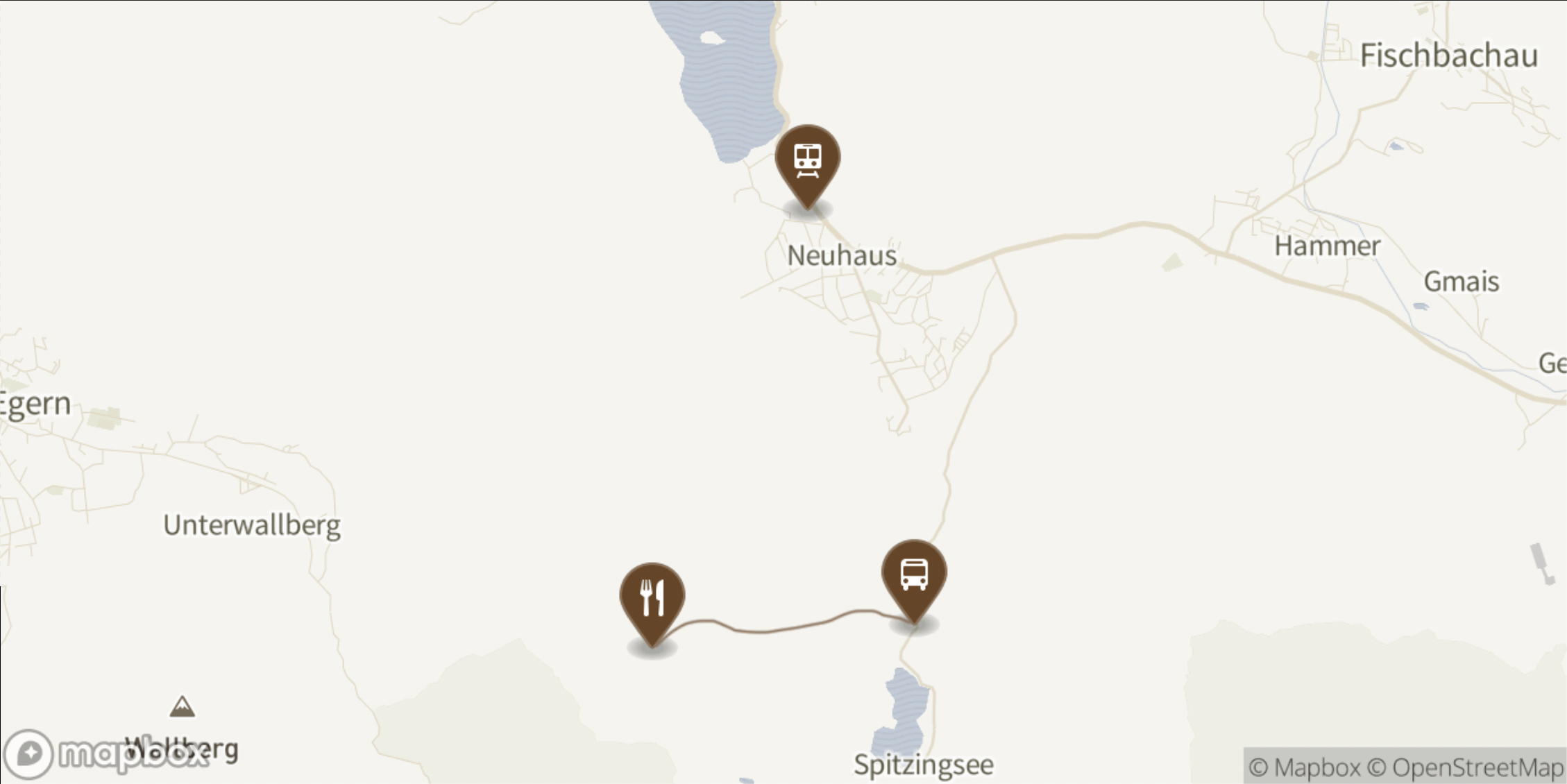Hike through a stunning winter wonderland at sunset
Enjoy traditional Bavarian cuisine at a mountain hut
Experience an exhilarating 2.5km sledge ride under the stars
Perfect for beginner sledgers (with a sense of adventure!)
Why We Love This Trip
Interactive Map

Points of Interest
Your Day Trip Timeline
Take train from Munich Hauptbahnhof to Fischhausen-Neuhaus
Check webcams beforehand for snow conditions
Wait at Fischhausen-Neuhaus station
Train-bus timing gap of ~45 mins, warm up at station restaurant
Catch bus to Schliersee sledging area
Get off at Schwaighof bus stop
Find sledge pile marker at trail start
Don't take sledges from bottom - rental at top only
Hike up the 2.5km trail to the mountain hut
Takes about 45-60 minutes, beautiful sunset views
Enjoy dinner at the mountain hut
Try the Käsespätzle (Alpine mac & cheese)
Rent sledges at the hut
Get safety instructions for steering and braking
Descend under the stars
10-minute thrilling ride down, headlamp recommended
Return to station
Note: Last bus at 6pm, taxi needed for later returns
Support Us
Plan Your Trip
Get personalized recommendations and custom itineraries for your Munich adventure. Whether you need help planning the perfect day trip, finding hidden gems, or creating a multi-day itinerary, we're here to make your Munich experience unforgettable.
| Consultation | Time |
|---|---|
| Quick Q&A | 20 min |
| Tailored Consultation | 45 min |
Join Our Tours
Experience Munich like a local with our personalized walking tours and full-day adventures! From hidden gems to local favorites, we'll show you the authentic side of Munich that most tourists miss.